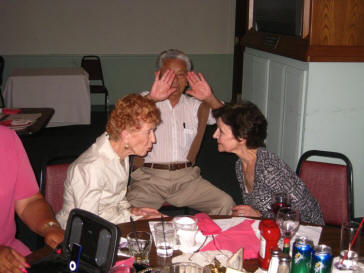Birthday Boys??? August Was An Excellent Month
We know Bob's age but Leon we had to figure out so...
Take square root of one divided by 1/2 his Social Security Number times number of slices of ham on his salad divided by number of ice cubes in Marcia's last "Ice on the Rocks" and volia, his age!


With all these candles we could really set a fire!
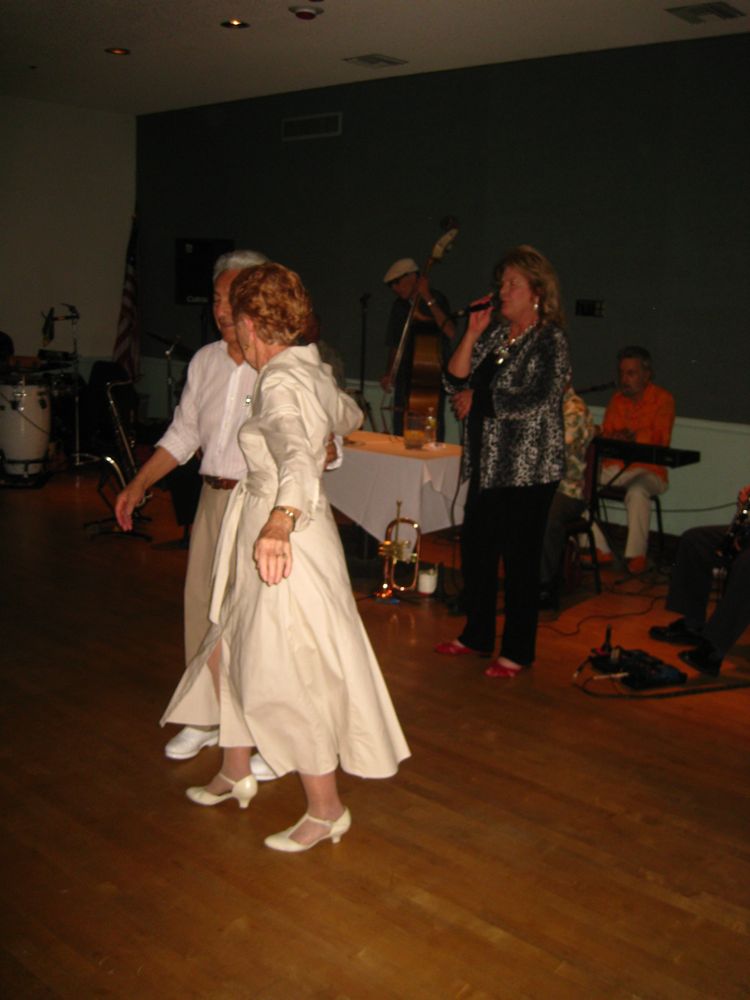
Vince and Nancy joined the silliness!
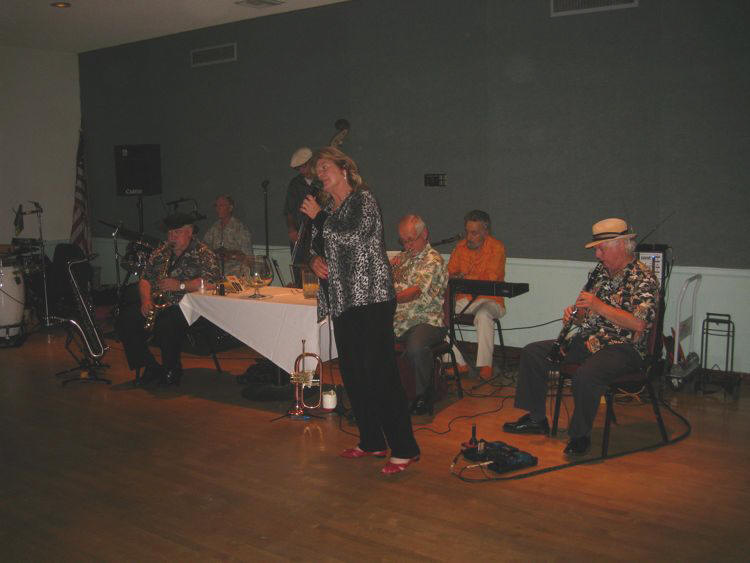
Great singers entertained us all evening!
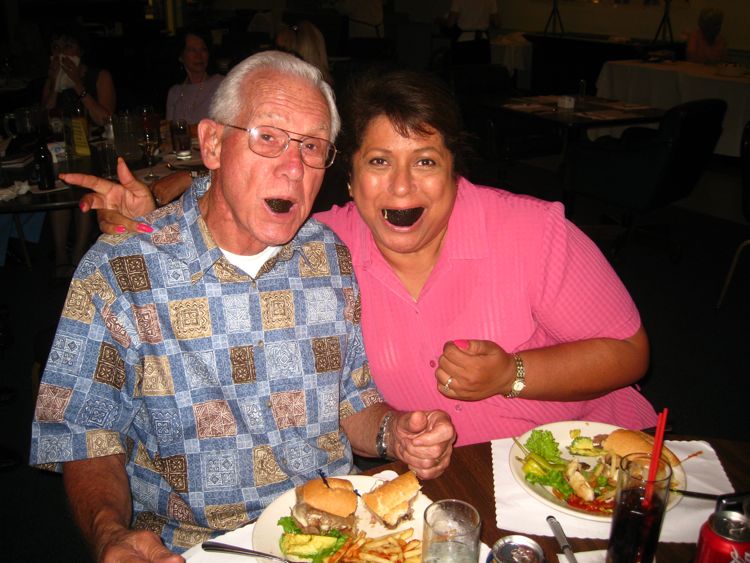
All I said was "Smile".... The Avocado Skins jumped into their mouths at the same time
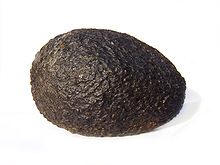
Did you know? - The word 'avocado' comes from the Nahuatl word ahuacatl ('testicle', a reference to the shape of the fruit). Avocados were known by the Aztecs as 'the fertility fruit'. In some countries of South America, such as Argentina, Bolivia, Chile, Peru, and Uruguay, the avocado is known by its Quechua name, palta. In other Spanish-speaking countries, it is called aguacate, and in Portuguese it is abacate.
The fruit is sometimes called an avocado pear or alligator pear (due to its shape and the rough green skin of some cultivars). The Nahuatl ahuacatl can be compounded with other words, as in ahuacamolli, meaning 'avocado soup or sauce', from which the Mexican Spanish word guacamole derives. ~Wikipedia

Vince and Nancy are going to show what they can do with French fries.... Oh oh!

Jan and Brian are getting ready to go to the UK.. We will miss them
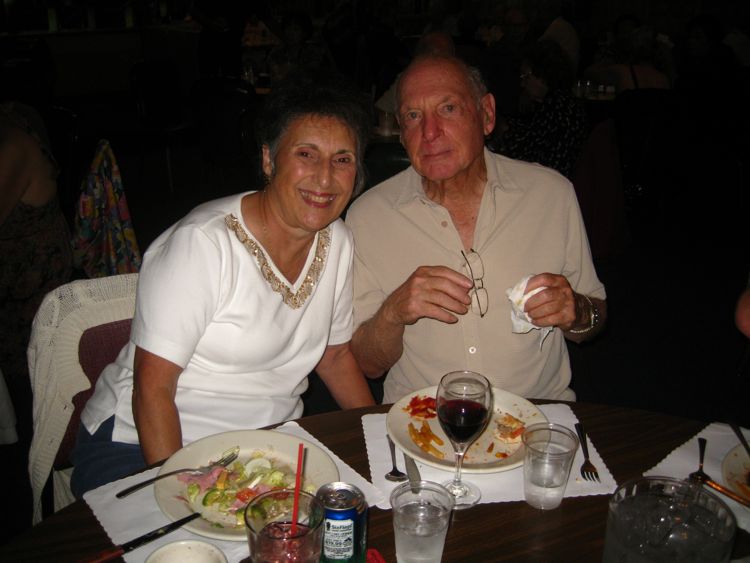
Irene has Herb under control... So far!

This lady can really sing! A joy to listen to!

Leon and Marcia are fueled up and ready to dance!
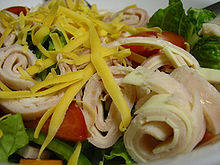
Did you know? - Food historians do not agree on the history and composition of chef's salad much less who assembled the first one. Some trace this salad's roots to Salmagundi, a popular meat and salad dish originating in 17th century England and popular in colonial America. Others contend chef's salad is a product of early twentieth century, originating in either New York or California.
The person most often connected with the history of this salad is Louis Diat, chef of the Ritz Carleton in New York City during the 1940s. While food historians acknowledge his recipe they do not appear to be convinced he originated the dish, which is more popularly attributed to either chef Victor Seydoux at the Hotel Buffalo, a Statler Hotel in Buffalo, New York or chef Jacques Roser at the Hotel Pennsylvania in New York City

Another great singer... Almost like Old Blue Eyes

The Jam Session is being moved to the third Sunday of the Month so as not to effect Garden Grove and the SA breakfasts

Balloons are eye catchers
Did you know? - A balloon is an inflatable flexible bag filled with a type of gas, such as helium, hydrogen, nitrous oxide or air. (Tonight most of us could have qualified, he he !) The balloon was invented by the Portuguese priest (at 45 years of age) Bartolomeu de Gusmão (brother of the Portuguese statesman Alexandre de Gusmão), and the first public exhibition was to the Portuguese Court on August 8, 1709, in the hall of the Casa da Índia in Lisbon.

Oh oh... Paul is getting the "Evil" Eye from Sandy
Did you know? - The evil eye is a look that is superstitiously believed by many cultures to be able to cause injury or bad luck for the person at whom it is directed for reasons of envy or dislike. The term also refers to the power attributed to certain persons of inflicting injury or bad luck by such an envious or ill-wishing look.
In many Latin American countries, as a preventive method to avoid the evil eye, parents will tie a red ribbon around the child's wrist or ankle. The psychodynamics of envy inflict unspeakable suffering on the envious subject, and may be responsible for certain cases of hysterical blindness. ~Wikipedia
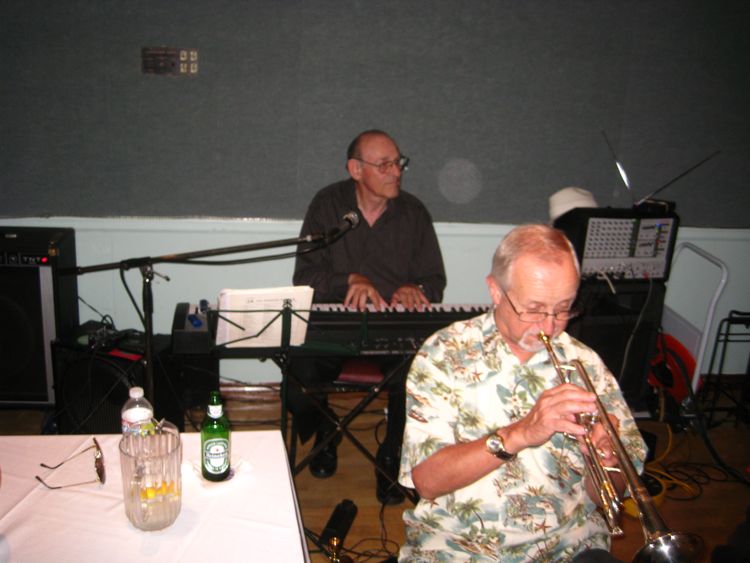
Hank at the keyboard
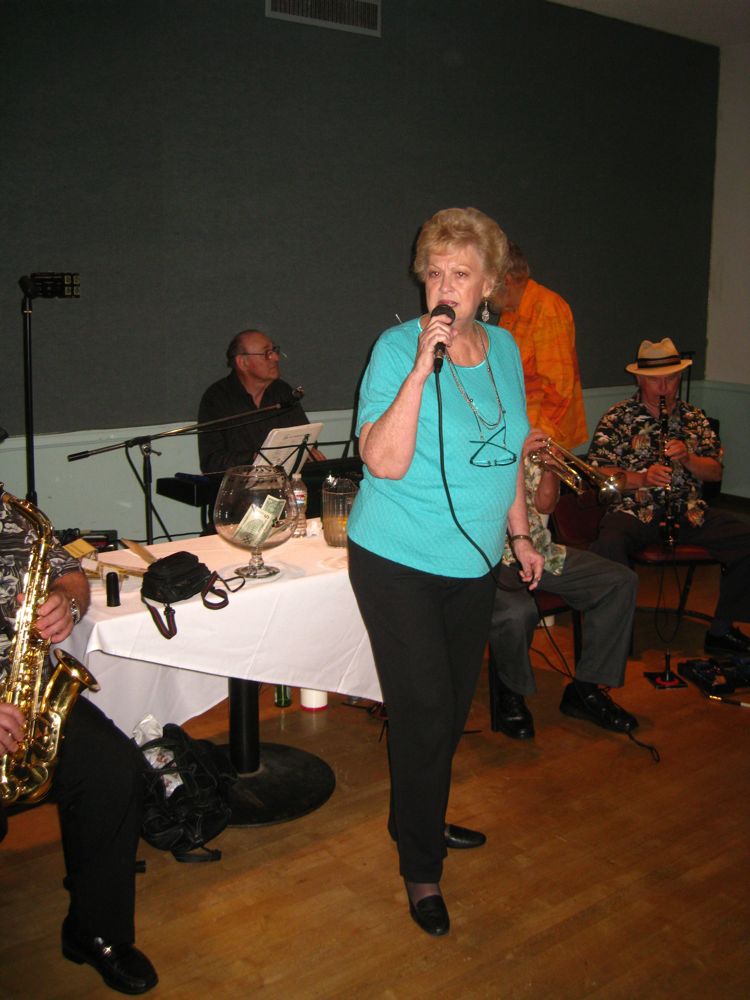
Great music with great singing... Life is good!
Did you know? - Singing is the act of producing musical sounds with the voice, and augments regular speech by the use of both tonality and rhythm. A person who sings is called a singer or vocalist. Singers perform music known as songs that can either be sung a cappella (without accompaniment) or accompanied by musicians and instruments ranging from a single instrumentalist to a full symphony orchestra or big band.
Singing is often done in a group of other musicians, such as in a choir of singers with different voice ranges, or in an ensemble with instrumentalists, such as a rock group or baroque ensemble. Nearly anyone who can speak can sing, since in many respects singing is a form of sustained speech. ~Wikipedia

Shirley and Paul twirl across the floor
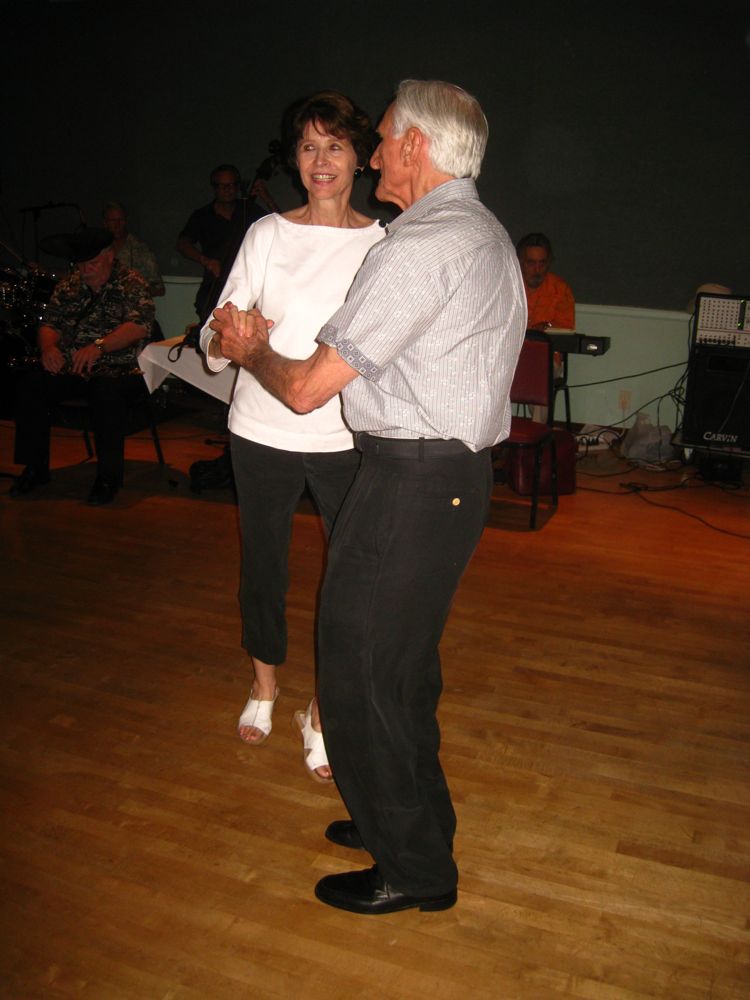
Sandy and Bob just tease us with how easy it looks...
Time for the Birthday Cakes!
Did you know? - The earliest author who mentions cheesecake is Aegimus, who wrote a book on the art of making cheesecakes (πλακουντοπουκόν σύγγραμμα). Cato the Elder's De Agri Cultura includes recipes for two pies for religious uses: libum and placenta. Of the two, placenta is most like modern cheesecakes, having a crust that is separately prepared and baked
In 1872 (around Leon's birth-year) , William Lawrence from Chester, NY, along with other dairymen, came up with a way of making an "unripened cheese" that is heavier and creamier by accident, actually looking for a way to recreate the soft, French cheese, Neufchatel. Lawrence distributed the cheese in foil, becoming a brand that is familiarly recognized as "Philadelphia".
Later on in 1912, James Kraft invented a form of this cream cheese, but pasteurized it; this is now the most commonly used cheese for cheesecake
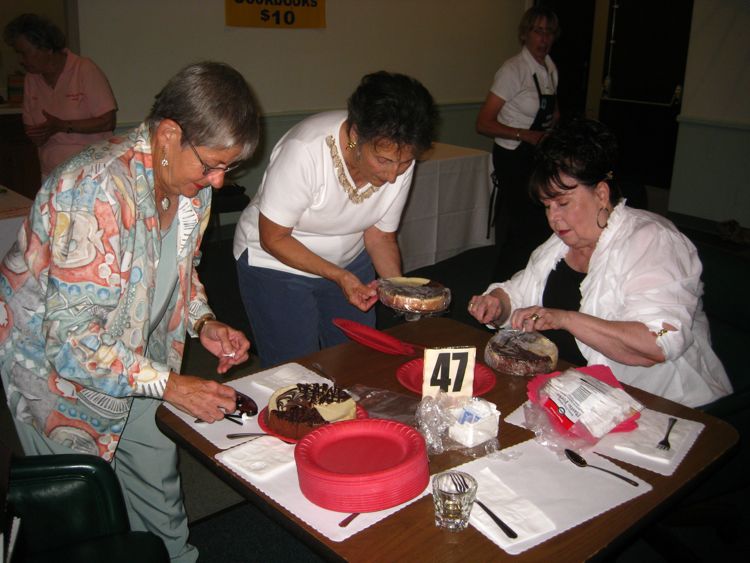
The cheesecakes are assembled by Sue, Irene and Shirley
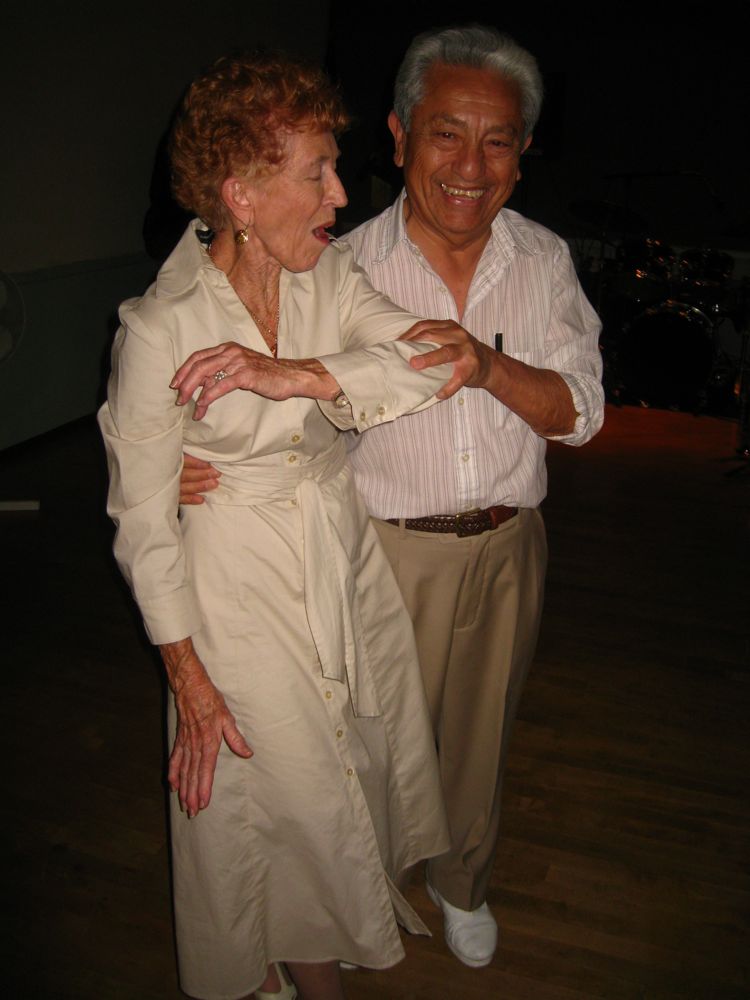
"Watch those hands buster"
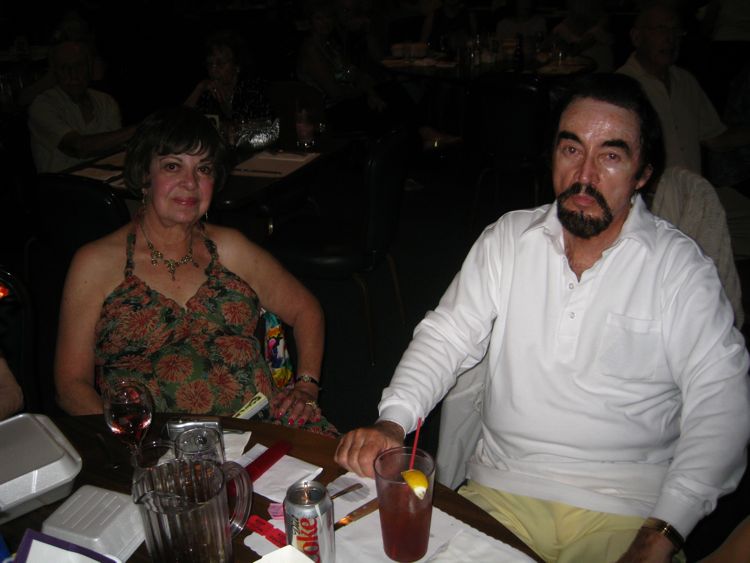
Gladys brought the balloons and plates/forks! It was a team effort!
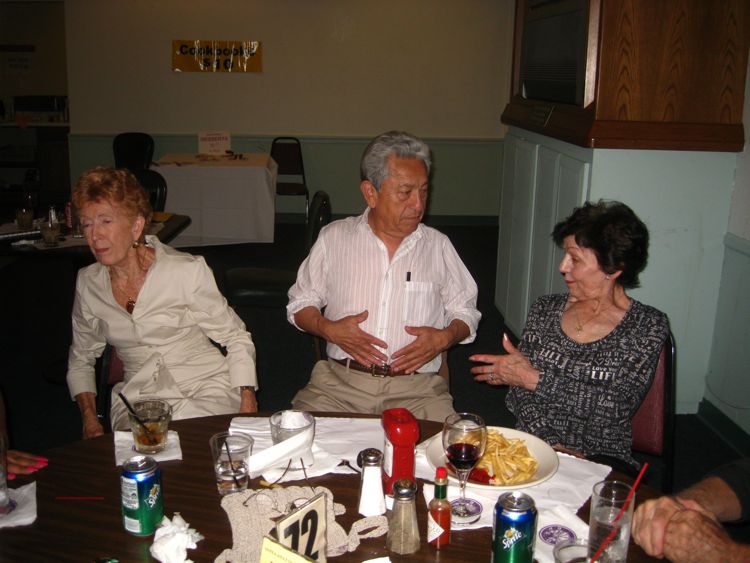
Nancy - "I'm not going to watch this"
Vince - "It's all muscle!"
Jan - "How do you keep so thin after eating your cheesecake and mine!"
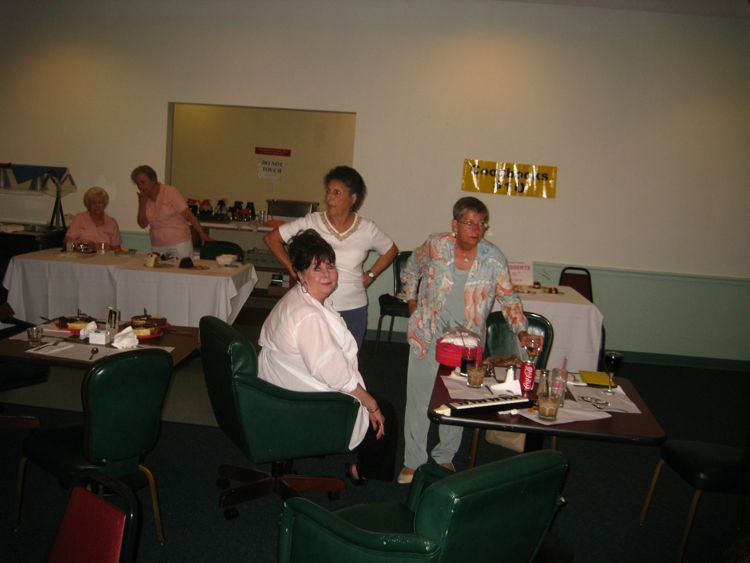
Mission accomplished


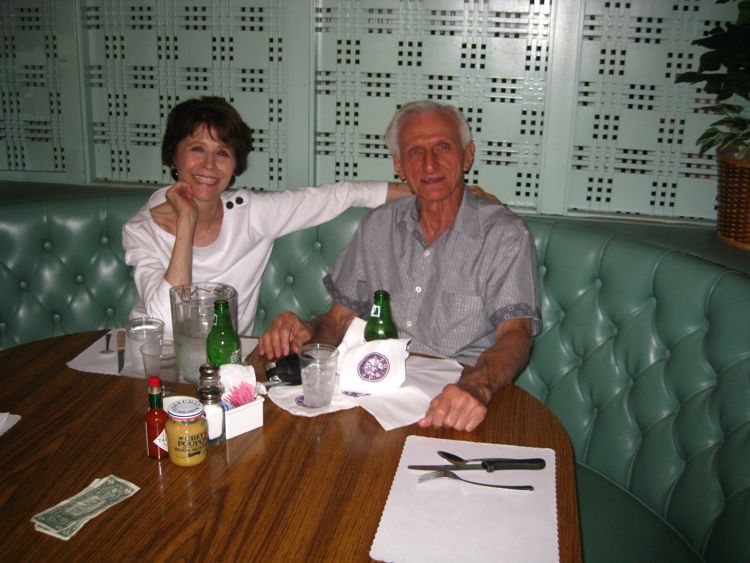
Ah... The Evil Eye is gone and smiles reign again
Time To Sing!
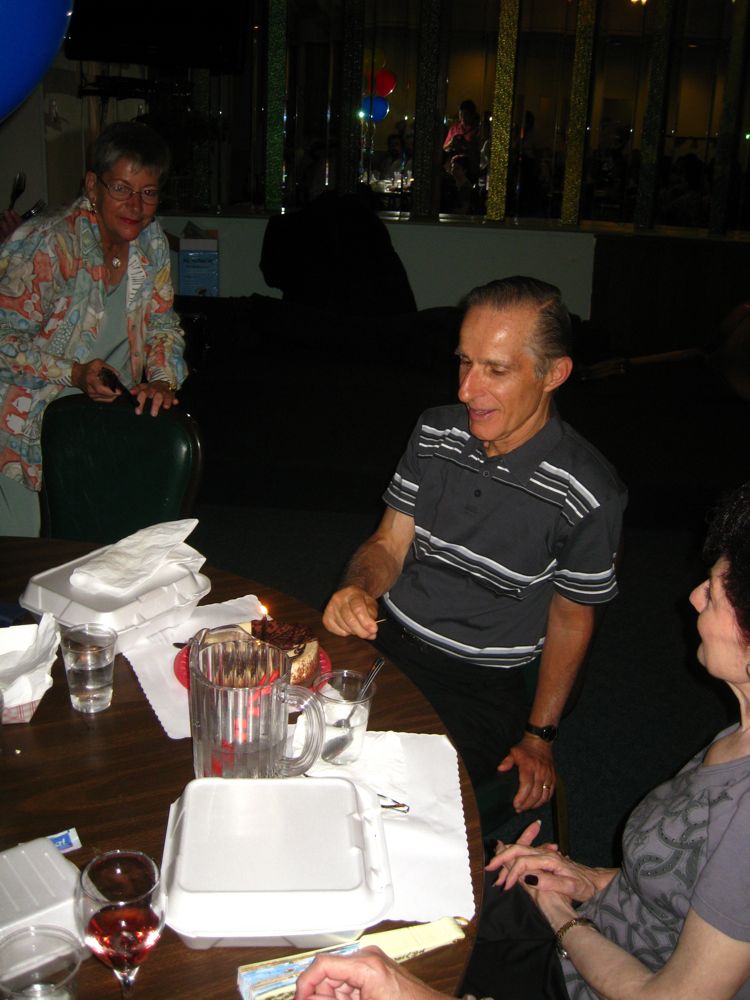
"Happy birthday to you!"


"Happy birthday to you!... oh, and don't play with the fire!"


The whole cake just for me???


"Where is MY cakie-pie???"
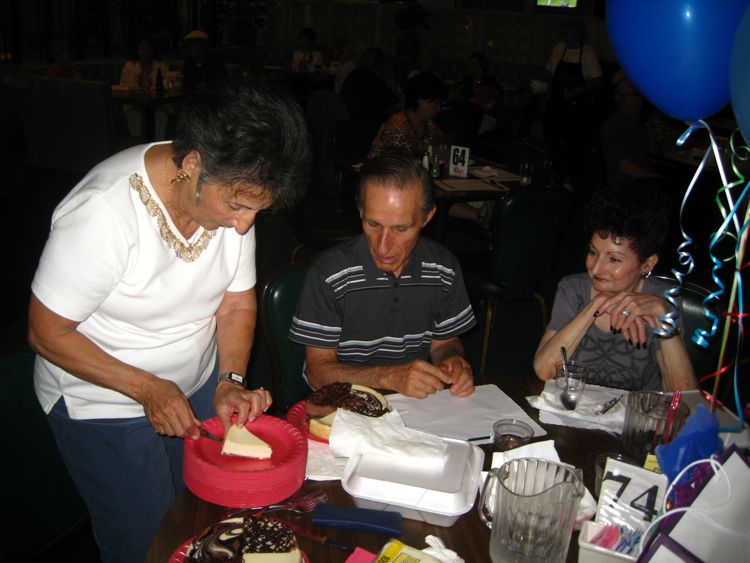
"No Irene, please don't take my cake away... Pulleeeeeze"

Something for everyone



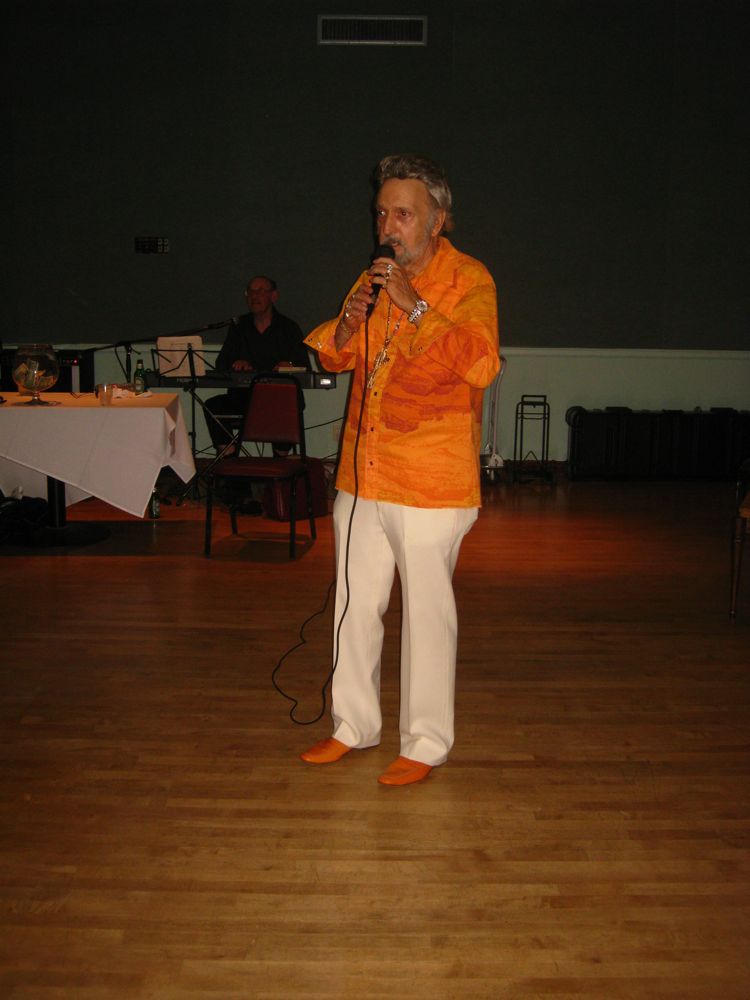
The bandleader also sings quite well!

"Please, can I have some more??"


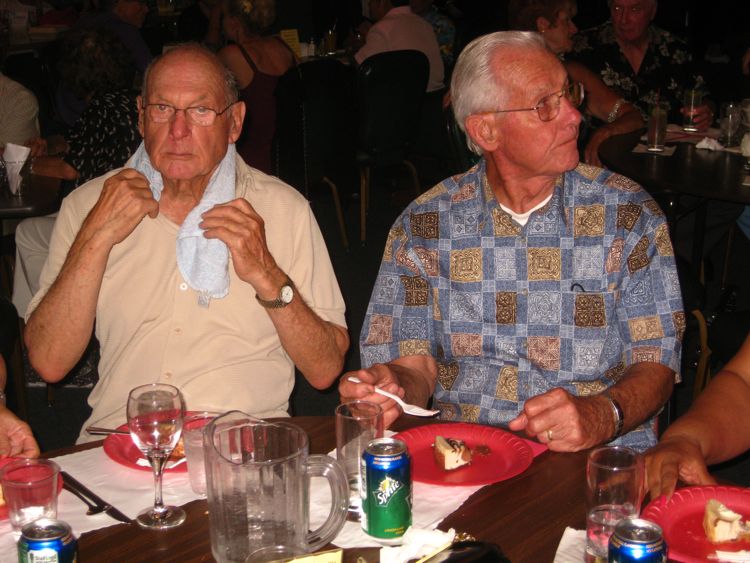
"Just try and take back my cake!!"


Go Hank
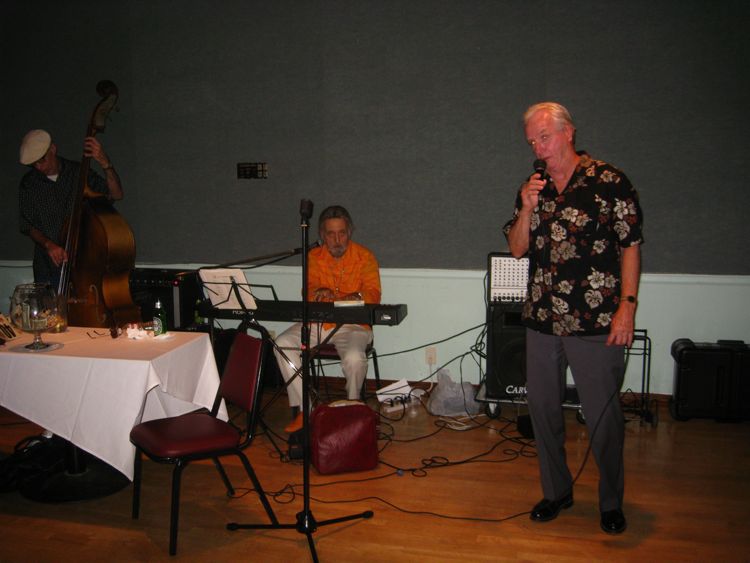
We had many good singers this evening

Bob and Donna
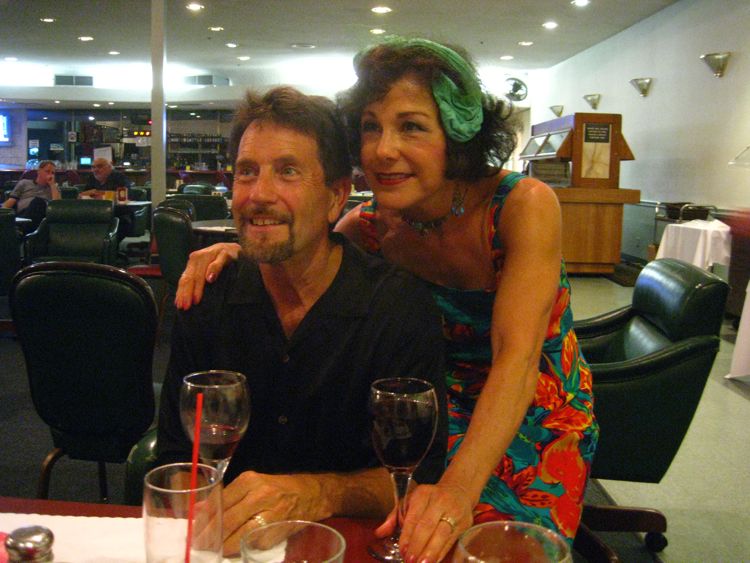


"Hey! We are here!"
Dance Of The Seven Veils
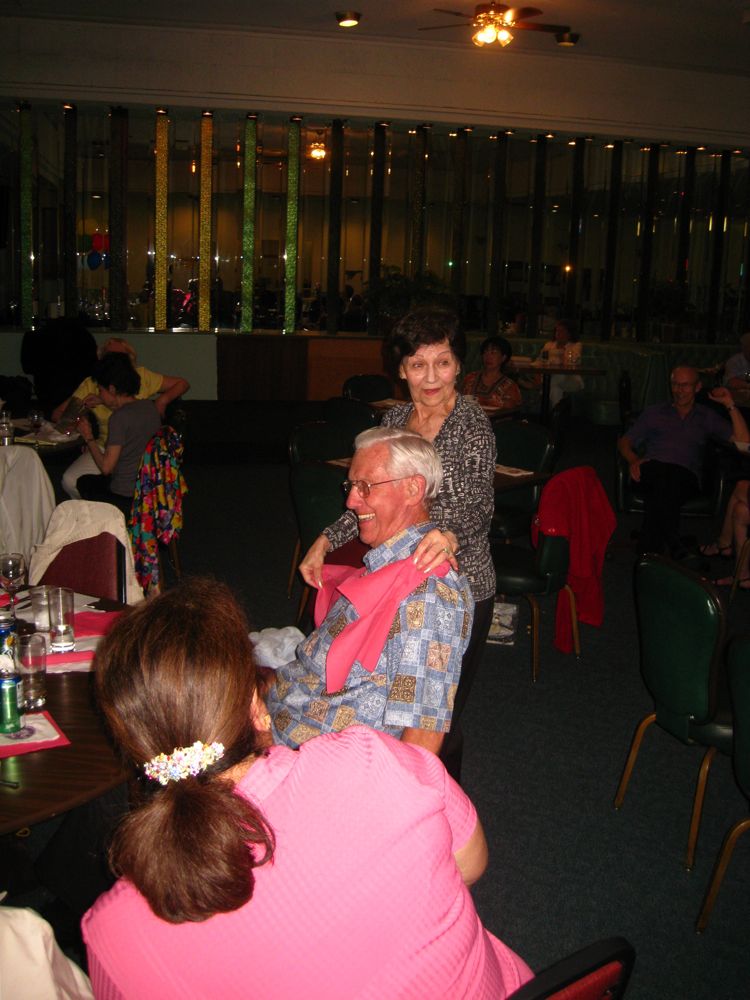
"Careful Del!!"
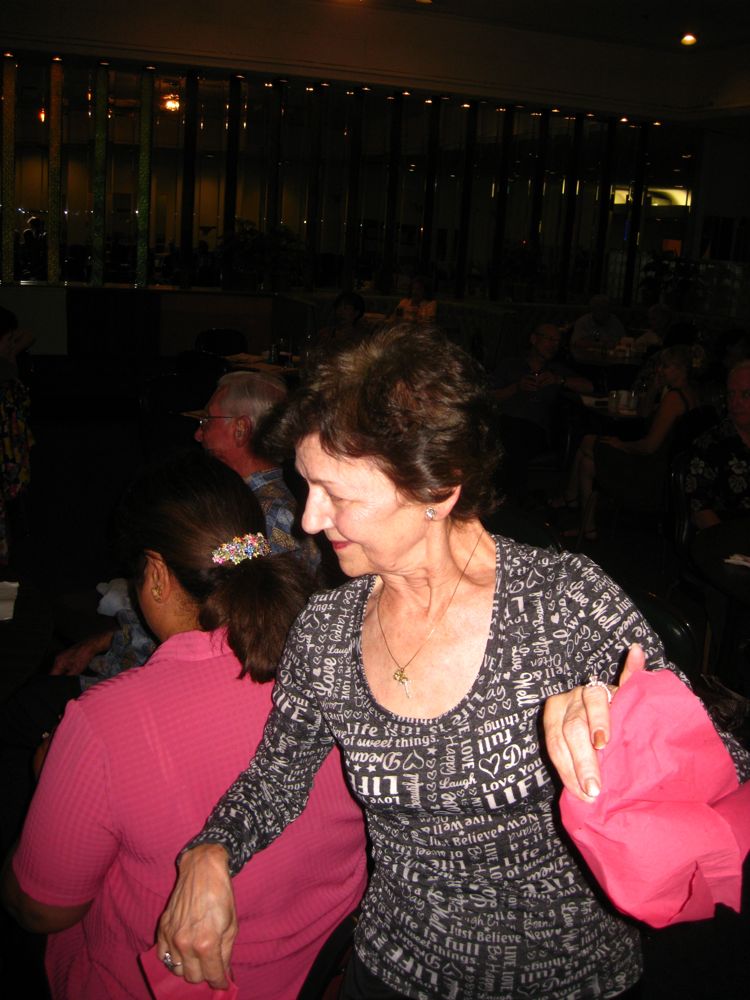
The veil is on the move
Did you know? - The first recorded instance of veiling for women is recorded in an Assyrian legal text from the 13th century BCE, which restricted its use to noble women and forbade prostitutes and common women from adopting it. The Mycenaean Greek term a-pu-ko-wo-ko meaning "craftsman of horse veil" written in Linear B syllabic script is also attested since ca. 1300 BC. Ancient Greek texts have also spoken of veiling and seclusion of women being practiced among the Persian elite.
For many centuries, until around 1175, Anglo-Saxon and then Anglo-Norman women, with the exception of young unmarried girls, wore veils that entirely covered their hair, and often their necks up to their chins (see wimple). Only in the Tudor period (1485), when hoods became increasingly popular, did veils of this type become less common.

"Oh no! She's at it again! "
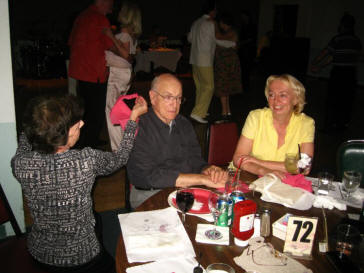
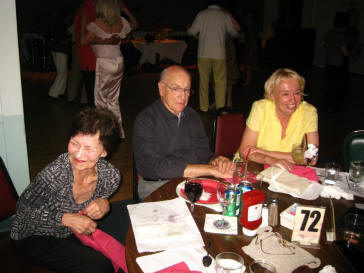
"He he... It's gets him every time!"

"What's going on over there?"
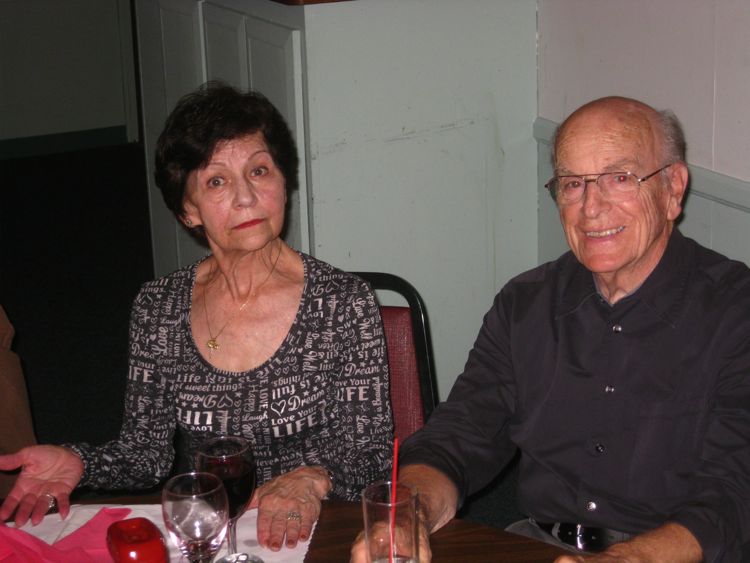
"Who? Me?"

The birthday boys



"Would you buy a car from these fine specimens?"
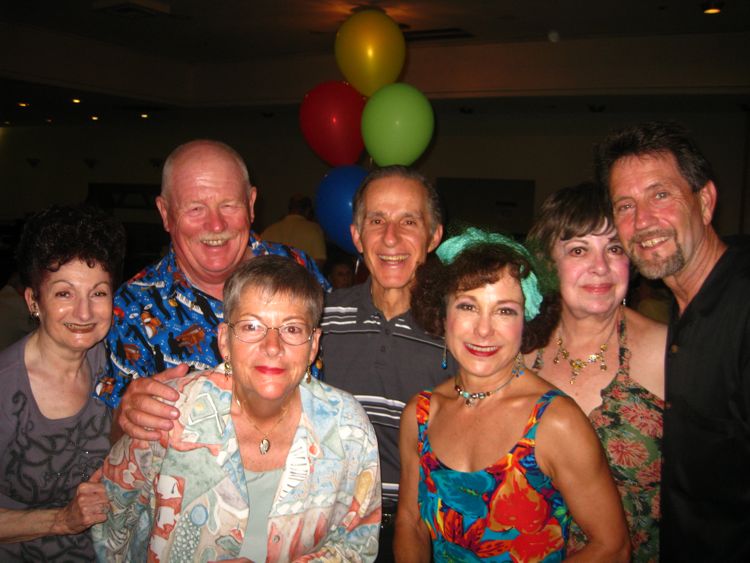
Smiles everywhere!

Vance always wondered what Pole Dancing was all about! Thank you for NOT trying!
Did you know? - Pole dancing is a form of performing art, a combination of dancing and gymnastics. It involves dancing sensually with a vertical pole and is often used in strip clubs and gentlemen's clubs. A similar pole (Chinese poles) is used in cabaret/circus and stage performance in a non-erotic environment, in which context the style and moves are very different.
Advanced pole dancing requires significant strength, flexibility and endurance. In a Elk Lodge setting, pole dancing is often performed less gymnastically and combined with tease, Go-Go, and/or dancing laps between performers. The dancer(s) may simply hold the pole, or use it to perform more athletic moves such as climbs, spins, and body inversions. Upper body and core strength are important to proficiency, which takes time to develop.

Now here is an idea.... Two pole dancers at one time

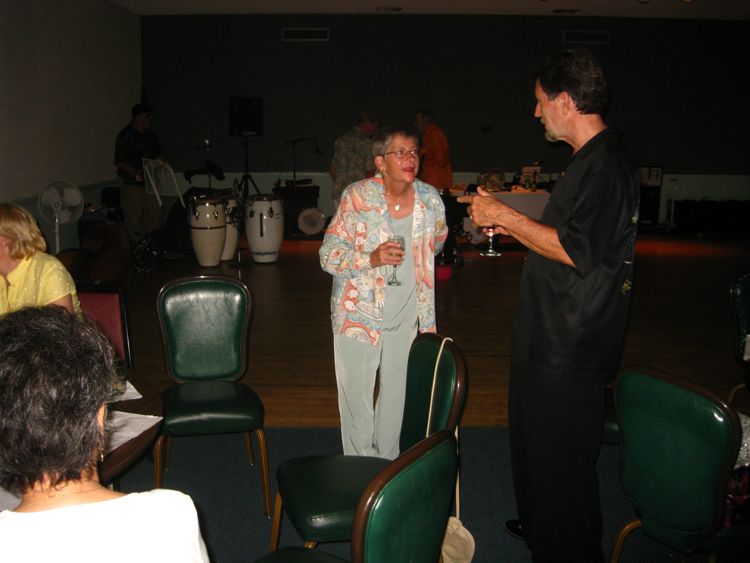
Time for a glass of vino
Did you know? - Vino is the word for wine in the Italian, Spanish and many Slavic languages
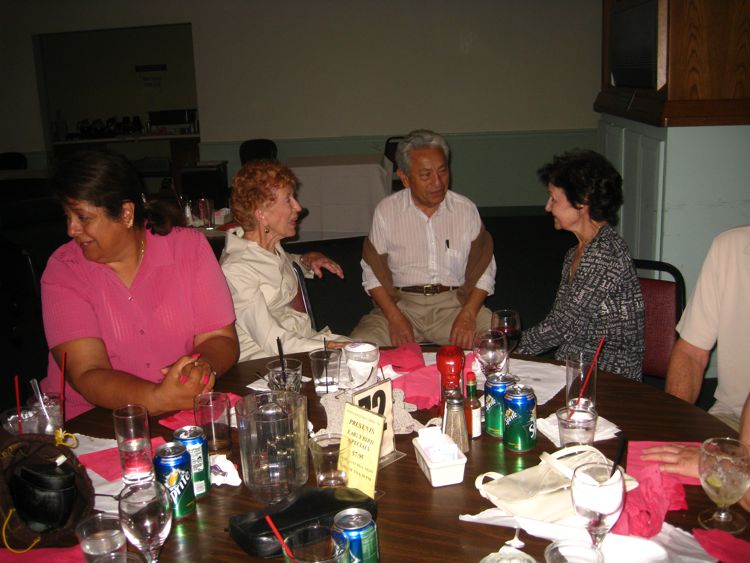
OMG! Look at the table!
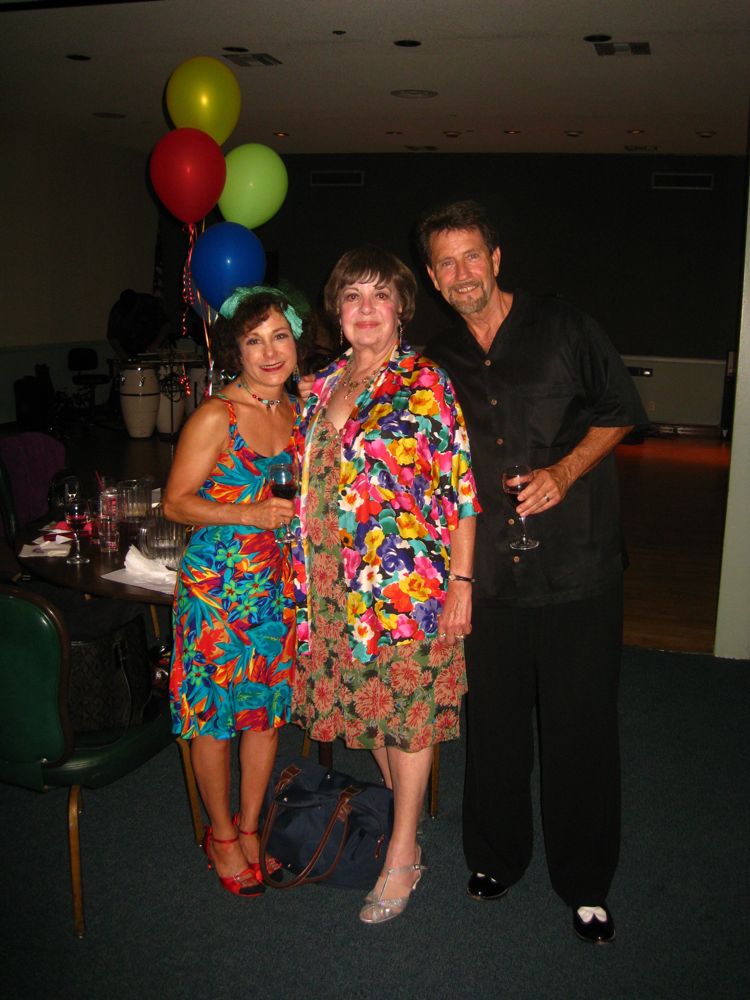
Bob did NOT get the memo about flowery outfits for this evening!
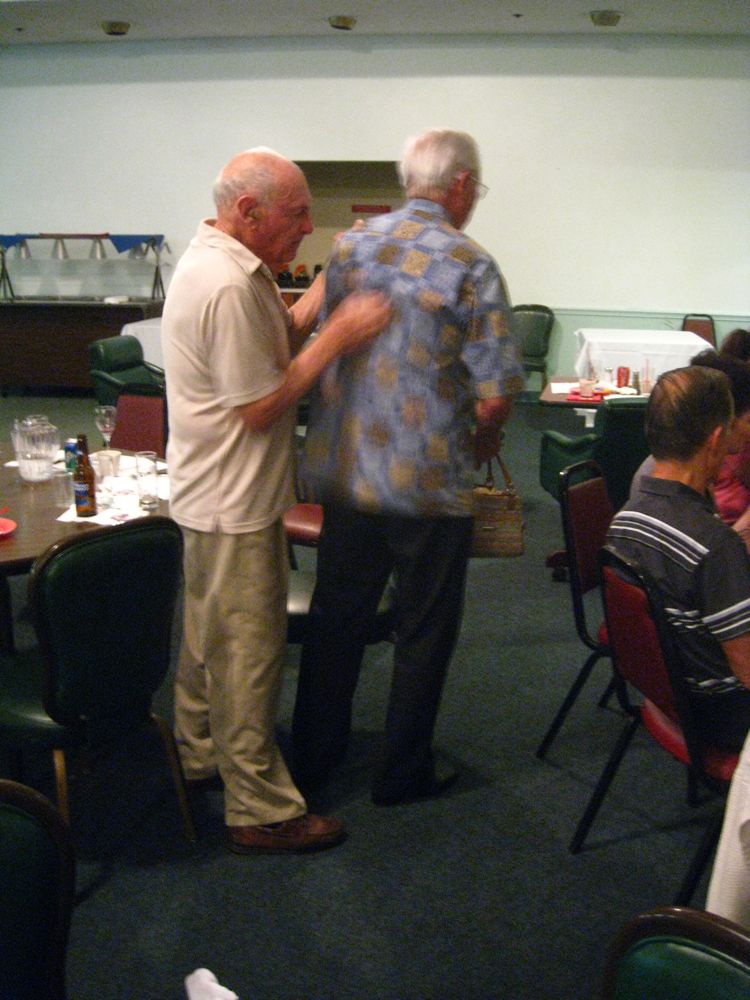
Del gets so excited when Herb rubs his back he shimmies all over!
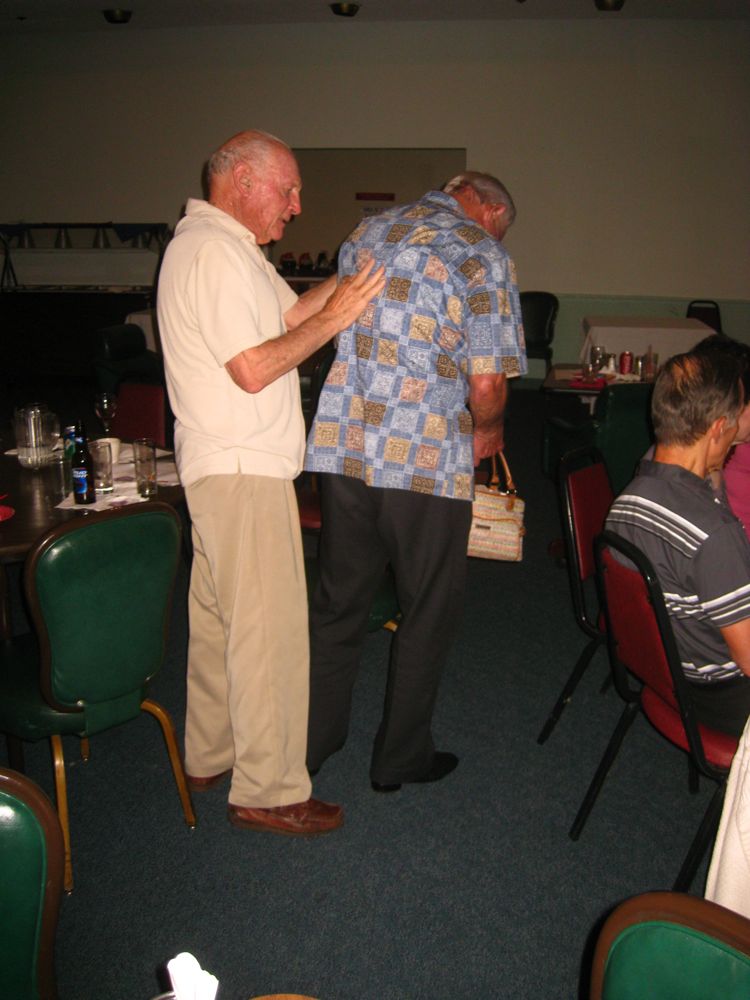
Well... Maybe the camera shook a little!
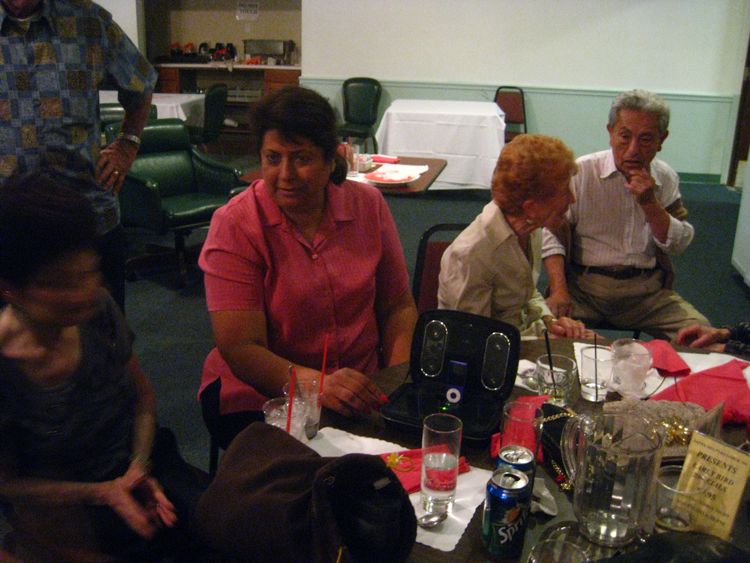
The iPod made its entrance when the band went home!
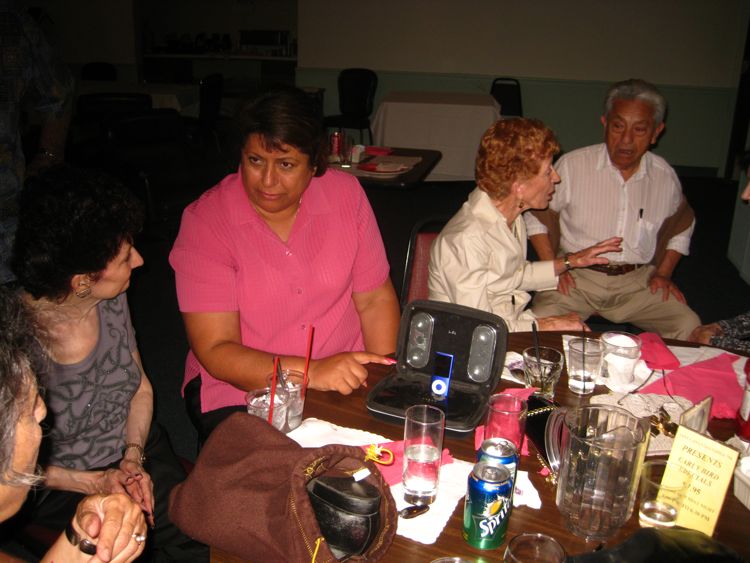
See... Just push this button and smoke comes out!
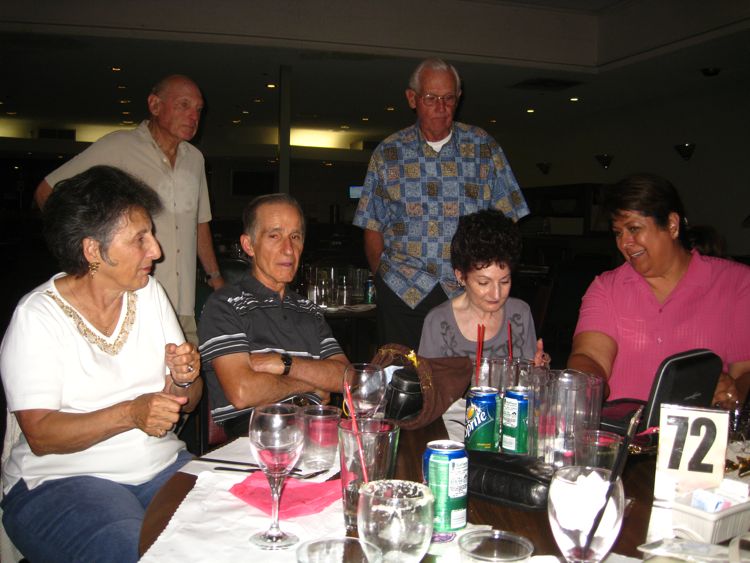
Irene does the Hand Jive (But how did she know that since it was before her time?)
Did you know? - The Hand jive is a dance particularly associated with rock and roll and rhythm and blues music of the 1950s. It involves a complicated pattern of hand moves and claps at various parts of the body, following and/or imitating the percussion instruments. It resembles a highly elaborate version of Pat-a-cake. Hand moves include thigh slapping, cross-wrist slapping, fist pounding, hand clapping, and hitch hike moves.
In 1957 when film-maker Ken Russell was a freelance photographer, he recorded the teenagers of Soho, London hand-jiving in the basement of The Cat's Whisker coffee bar, where the hand-jive was invented.

Worry when these two are together!! We remember the wine bottles at the Huntington!
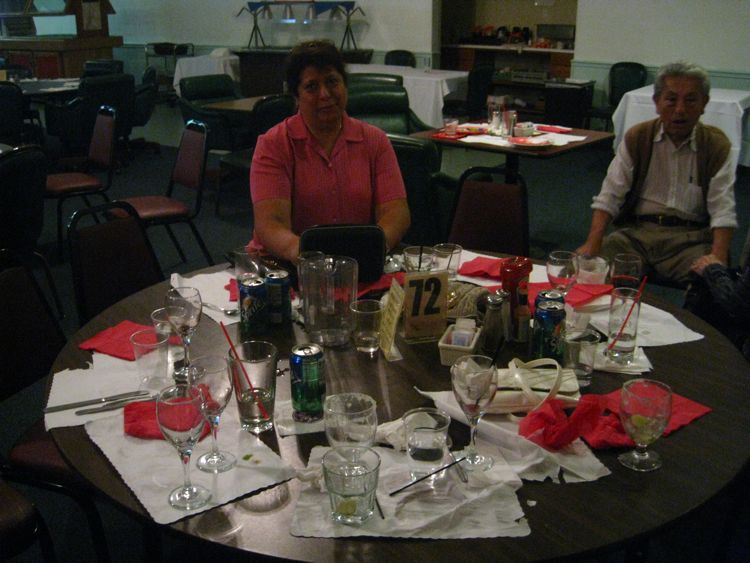
"What a mess... Time to change tables!"

Vicky captures Paul capturing the moment

Dancing the evening away

"You are NOT Spiderwoman not matter what you think!"

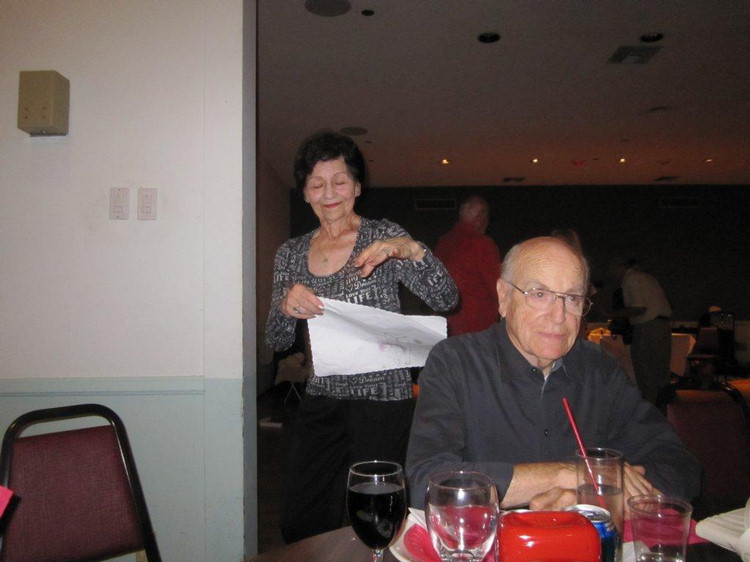
"She will keep trying"
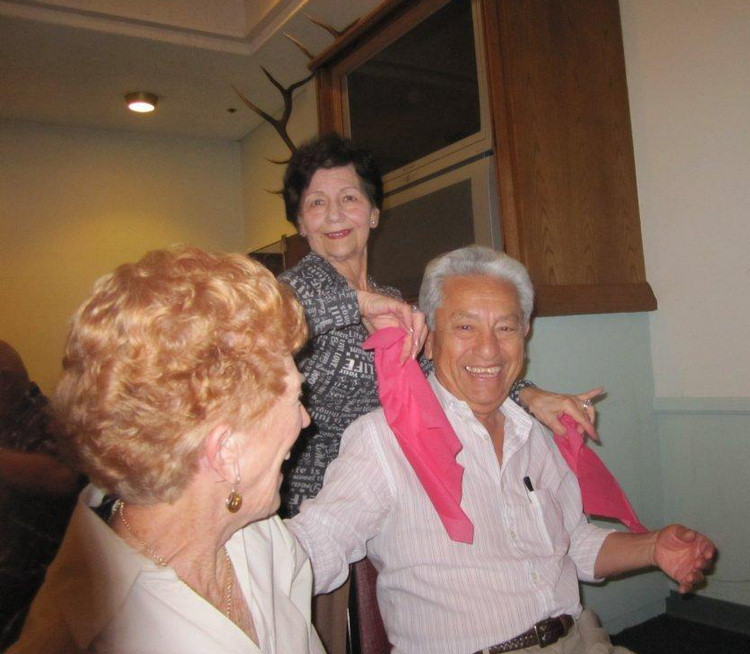
Rub-a-dub-dub!
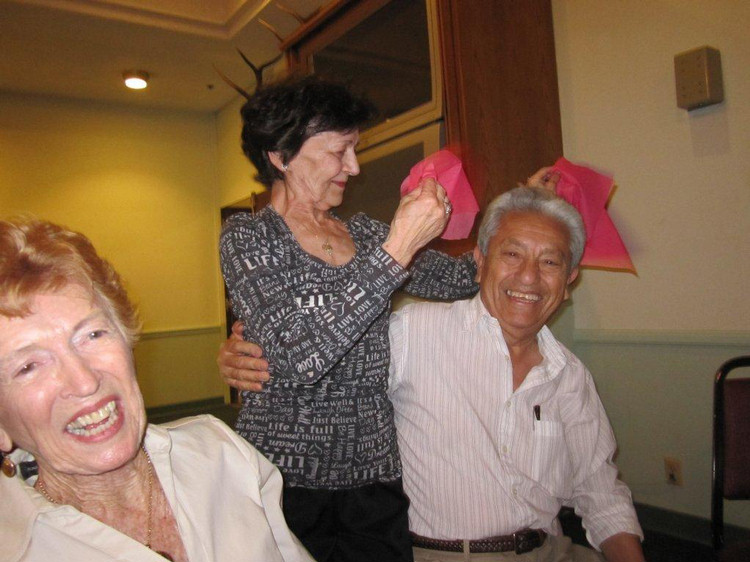
Vince is enjoying this a lot!
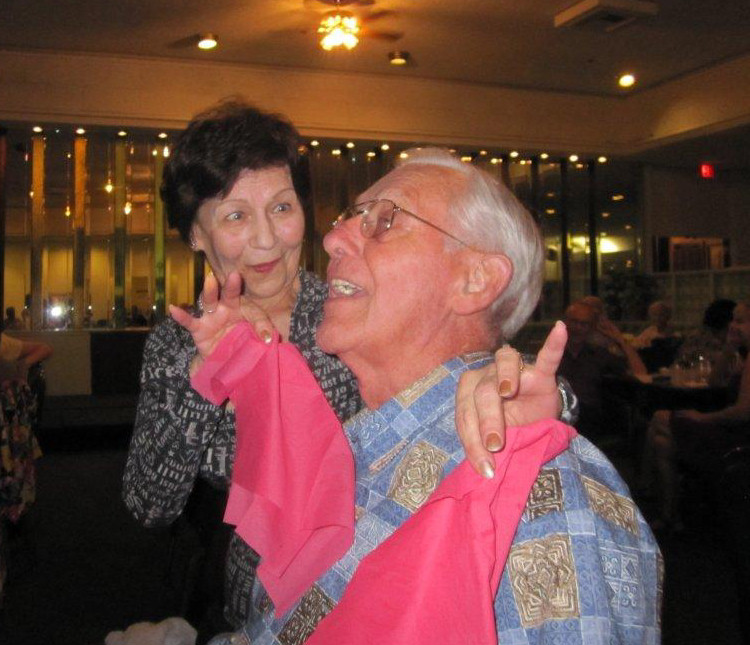
"You stop that some more!"
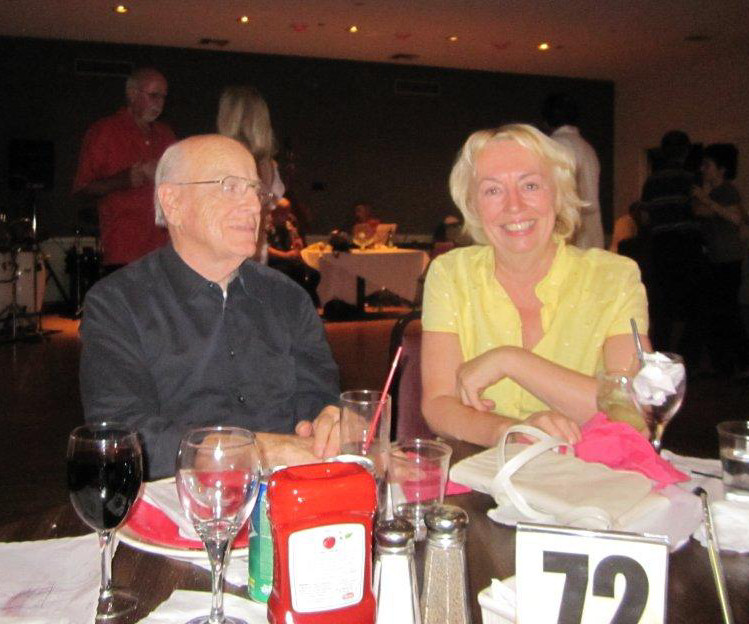
Jim and Jan attempt to provide adult supervision on this routy group!
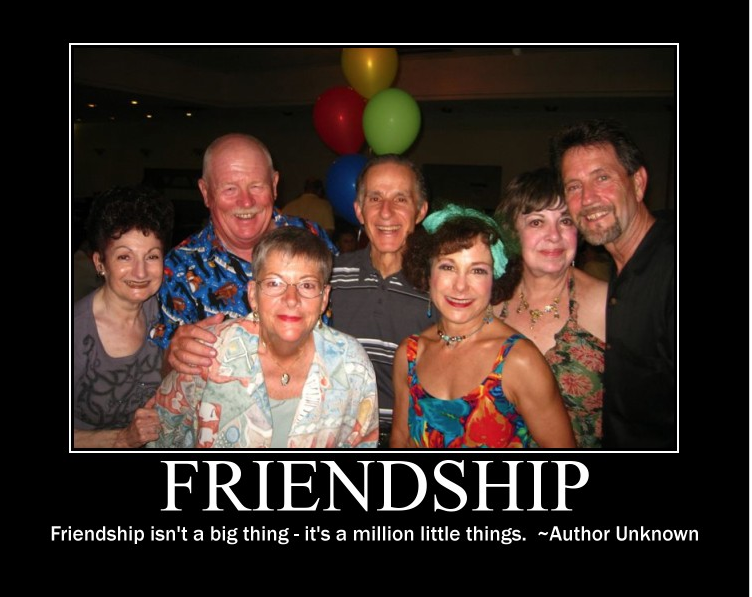
Time To Head For Home


"Where have you been?"
